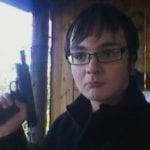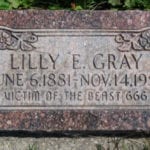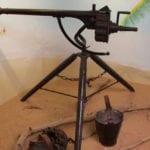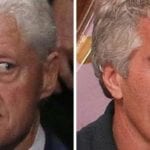 Food
Food  Food
Food  Technology
Technology 10 Futuristic Fungal Technologies
 History
History 10 Not-so-Spooky Events That Also Happened on October 31
 Creepy
Creepy 10 Unsettling Ghost Stories to Tell This Halloween
 Crime
Crime 10 Truly Evil People Who Used Halloween as the Perfect Cover
 Movies and TV
Movies and TV 10 Wildly Different Movie Takes on Nuclear War
 Creepy
Creepy 10 Places Where Folklore Is Alive and Well
 History
History 10 Events That Unexpectedly Changed American Life
 Pop Culture
Pop Culture 10 Cases of Grabbing Defeat from the Jaws of Victory
 History
History 10 Common Misconceptions About the Renaissance
 Food
Food The Fantastic Chemistry Behind Why 10 Popular Foods Taste So Good
 Technology
Technology 10 Futuristic Fungal Technologies
 History
History 10 Not-so-Spooky Events That Also Happened on October 31
Who's Behind Listverse?

Jamie Frater
Head Editor
Jamie founded Listverse due to an insatiable desire to share fascinating, obscure, and bizarre facts. He has been a guest speaker on numerous national radio and television stations and is a five time published author.
More About Us Creepy
Creepy 10 Unsettling Ghost Stories to Tell This Halloween
 Crime
Crime 10 Truly Evil People Who Used Halloween as the Perfect Cover
 Movies and TV
Movies and TV 10 Wildly Different Movie Takes on Nuclear War
 Creepy
Creepy 10 Places Where Folklore Is Alive and Well
 History
History 10 Events That Unexpectedly Changed American Life
 Pop Culture
Pop Culture 10 Cases of Grabbing Defeat from the Jaws of Victory
 History
History 10 Common Misconceptions About the Renaissance
10 Horrifying Terrorist Attacks That Almost Happened
Since 9/11, you’ve read about dozens of terror plots that have been foiled. The following is a list of some of the most extravagant terrorist plots that were thwarted only through good detective work, the perpetrators’ incompetence, or just plain luck.
10Attempted Assassination Of George H.W. Bush
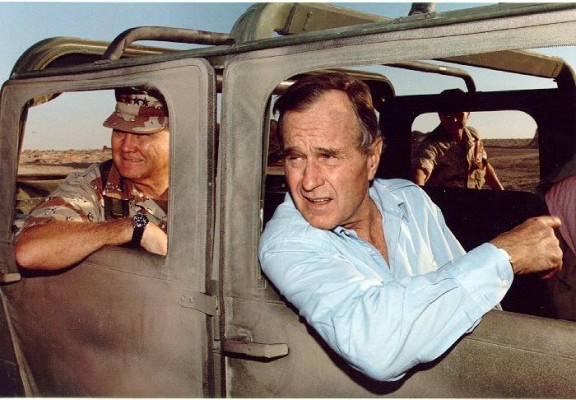
On August 2, 1990, prompted by a dispute over oil, Saddam Hussein ordered the invasion and occupation of neighboring Kuwait. After Hussein refused to withdraw his troops, the United States and a coalition of 34 other nations waged a month-long aerial bombing campaign, followed by a ground invasion that forced Iraq from Kuwait.
Iraq had been cowed by the defeat, but Saddam Hussein and his intelligence service were eager to strike back at their enemies, and they chose a difficult target: The man who had orchestrated the war against Iraq, former President George H.W. Bush. In April 1993, Kuwait was hosting the former president to thank him for the role of the US in their liberation. Hussein seized on the visit by Bush to take revenge for the defeat of his forces two years earlier. Over a dozen agents of the Iraqi Intelligence Service entered Kuwait with sophisticated explosives. The plan was to attack Bush’s motorcade with a car bomb while en route to Kuwait University for a reception. If the bombing was thwarted, the agents had a backup plan—one of them would wear an explosive vest and try to get close enough to Bush to kill him. The plot came apart when suspicious Kuwaiti civilians contacted the authorities, leading to the arrest of the cell members.
The freshly elected Bill Clinton was presented with intelligence showing that the explosives seized in the plot were identical to other explosives made by the Iraqi Intelligence Service, and that several of the suspects had confessed to the plot. In retaliation for the attempt, Clinton ordered a cruise missile strike against the headquarters of the Iraqi Intelligence Service on June 26, 1993. The missiles, which struck in the early morning hours to minimize casualties, detroyed the building and killed at least three people. There were no further serious attempts by the Iraqi Intelligence Service to strike at the United States outside of Iraqi borders.
9The Millennium Plot
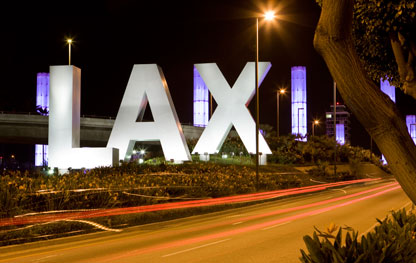
In 1999, almost two years before 9/11, Al-Qaeda cells in Canada, Jordan, and Yemen attempted a series of devastating attacks timed to coincide with New Year’s Eve. The targets were Los Angeles International Airport, the fully booked Radisson Hotel in Amman, three Christian holy sites in Jordan, and a US destroyer off the coast of Yemen.
The Millennium Plot, as it became known, was foiled through a combination of luck and police work. On December 14, 1999, Ahmed Ressam, a member of the Canadian cell, attempted to cross into the United States near Seattle. When a suspicious border officer searched his vehicle he fled on foot. He was soon apprehended and over 45 kilograms (100 lbs) of chemicals and timing devices were found in the trunk of his car. Ressam later confessed that he intended to leave the bomb in a suitcase near a passenger waiting area at LAX.
Also in late 1999, Jordanian intelligence officials tapped the phone conversations of an Al-Qaeda lieutenant and learned of the existence of a local cell, whose 16 members were quickly arrested. Over 2,200 kilograms (5,000 lbs) of precursor chemicals for explosives were seized. Finally, on January 3, 2000, members of the Yemeni cell launched a boat packed with explosives to detonate alongside a US destroyer, USS The Sullivans. Fortunately for the crew of The Sullivans, the would-be bombers overloaded their boat, which promptly sank to the bottom of the harbor.
8The Reno IRS Bombing
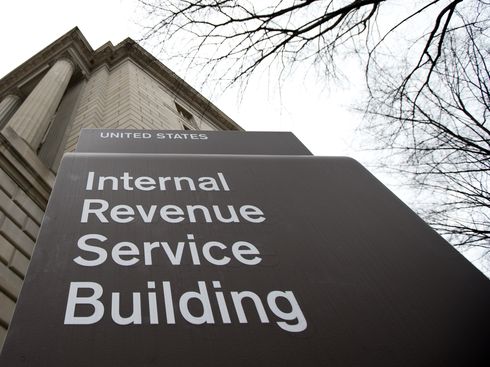
On April 19, 1995, Timothy McVeigh detonated a massive bomb in front of the Alfred P. Murrah Federal Building in downtown Oklahoma City, killing 168 people. His motive was revenge for what he perceived as abuse by federal law enforcement agencies. It later turned out that McVeigh was a product of a violent and paranoid subculture of local “militias” that feared a seizure of their civil liberties by the federal government.
A few months later, the militia movement almost spawned another attack on a federal building when, on December 18, 1995, anti-tax protesters Joseph Bailie and Ellis Hurst drove their pickup to the Internal Revenue Service building in Reno, Nevada. Once there, the two men unloaded a 45-kilogram (100 lb) fertilizer bomb packed into a barrel, and lit a one meter (three foot) fuse before driving off. Luckily, the fuse was a dud, and after an employee noticed the bomb, Bailie and Hurst were tracked down and arrested. Both men were ultimately sentenced to long prison terms.
7The New York City Landmark Plot
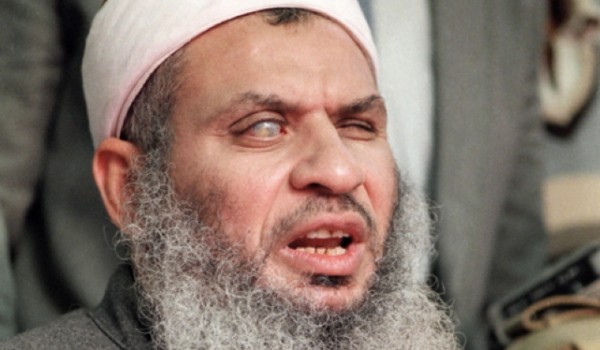
A series of attacks on the scale of 9/11 very nearly occurred in late 1993. The origins of the plot stem from a small mosque in Brooklyn and its leader, the blind imam Sheikh Omar Abdel Rahman. Rahman had been a prominent member of Islamic militant groups in his native Egypt, which he fled for the United States in 1990. His preaching railed against American support of Israel and the military dictatorship of Hosni Mubarak in Egypt. A small group of attendees at the mosque began meeting outside of worship services and plotting terrorist attacks intended to force the United States to cut off its support for Israel and Mubarak’s government. In April 1992, a new member joined the group. Ramzi Yousef, a 25-year-old Pakistani, landed at JFK International Airport and requested asylum. Yousef had a mysterious background, having obtained his engineering degree from Swansea University in Wales before traveling the world and associating with Islamic militants. At some point, Yousef decided that he wanted to strike at the United States on its own soil and linked up with Rahman to carry out that goal.
Yousef and Rahman’s followers constructed a 550-kilogram (1,200 lb) bomb and on February 26, 1993, they struck the World Trade Center, shredding several stories of the building, killing six people, and wounding over 1,000 others. After Yousef fled the country, the cell continued plotting, with new members joining their group, including a member of the Sudanese diplomatic mission to the United Nations. The group developed what was probably the most ambitious terrorist plot to date. They rented a garage and began mixing together the components for tons of explosives while other members of the group videotaped potential targets. The group decided to strike the United Nations building, the New York Field Office of the FBI, and the Lincoln and Holland Tunnels. The Sudanese member of the cell even planned to steal diplomatic license plates to aid in the attack. Unbeknownst to the cell, one of their members had turned informant and contacted the FBI. The FBI set up surveillance cameras at the garage and much of the preparation of the explosives was captured on camera. The Feds swept in on June 24, 1993 and arrested several members at the garage. A standoff ensued at the Al-Farouk Mosque when several followers threatened to forcefully prevent agents from arresting Rahman, but ultimately “the Blind Sheikh” agreed to surrender himself.
Ten men, including Rahman, were convicted of sedition and conspiracy. As a consequence of its involvement in the plot, Sudan’s second secretary to the UN was expelled and the country was placed on the US State Sponsors of Terrorism list, where it still remains, severely limiting aid and exports to the nation.
6Texas Refinery Plot
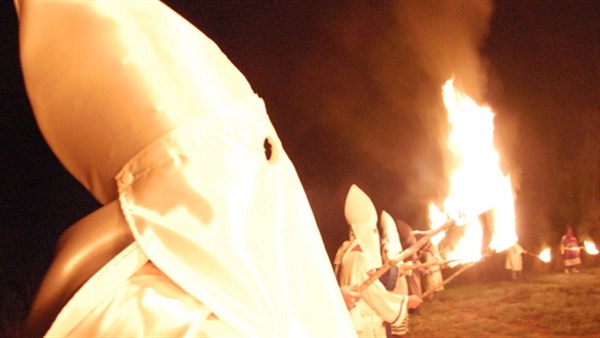
In 1997, Carl Waskom Jr., Edward Taylor Jr., and married couple Shawn and Catherine Adams, members of a Ku Klux Klan faction in Texas, planned a campaign of terror aimed at ethnic and religious minorities as well as government officials. To fund their goals, the group decided to rob an armored car believed to be carrying $2 million en route to a bank in Chico, Texas. But in order to pull off the robbery the group decided it needed to cause a diversion. So they settled on a plan that could have possibly killed half of the population of Wise County.
The group planned to set off a bomb at the Mitchell Energy & Development natural gas processing plant, which would have released a lethal cloud of hydrogen sulfide that officials estimated could have killed up to 30,000 people. The group had already tested several explosive devices and surveilled the plant, but the plot unraveled when a local Klan leader with knowledge of the group’s plans began having second thoughts about the mass destruction that would result and became an informant for the FBI. Federal officials tracked the group’s activities until they had enough evidence to make an arrest. Ultimately, all four members of the group were convicted and sentenced to lengthy prison terms while the informant still remains in hiding in the Witness Protection Program.
5The 7/21 Bombings
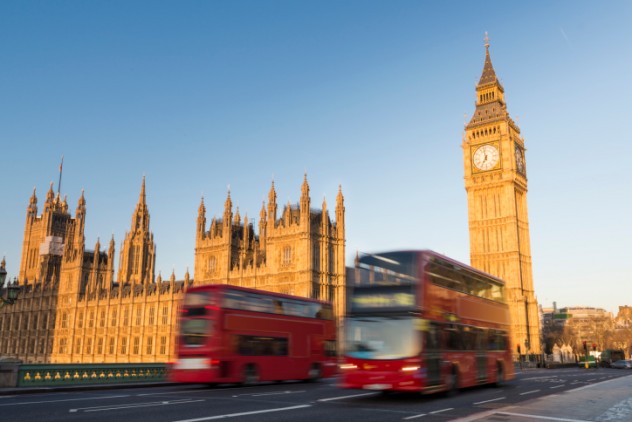
On July 7, 2005, three men detonated bombs on the London Underground, while a fourth bombed a double-decker bus, killing 52 people. The 7/7 attacks, as they became known, shocked the world and left the British public on edge. Exactly two weeks later, a nearly identical attack took place when Islamic militants Yasin Omar, Ramzi Mohammed, and Hussain Osman attempted to set off explosive-laden backpacks in the London Underground, while Muktar Ibrahim tried to detonate his backpack on a public bus.
Luckily, the perpetrators were inexperienced in the manufacture of explosives and each of the bombs fizzled due to the group’s bomb maker miscalculating the proportion of chemicals required. Had the bombs worked as planned, dozens would have been killed in a repeat of the 7/7 horror. After realizing that the bombs were duds, the bombers quickly fled the scene and went into hiding. However, the suspects were caught on video surveillance, and all four were rounded up within eight days of the attack. Documents retrieved from Al-Qaeda safe houses in Pakistan revealed that both the 7/7 and 7/21 attacks had been planned by the group in retaliation for British participation in the wars in Iraq and Afghanistan. The four would-be bombers were convicted of conspiracy to commit murder, with each man sentenced to serve at least 40 years.
4MLK Day Bomb Attempt
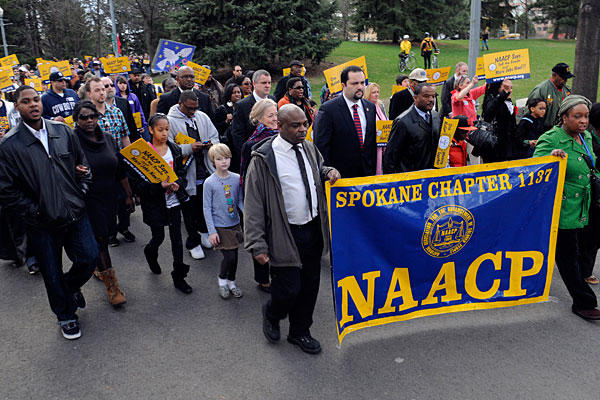
The United States has a tragic history of racially motivated violence, which reared its ugly head again in Spokane, Washington on January 17, 2011. Workers were cleaning up the downtown area in preparation for the town’s annual Martin Luther King Day parade when one of them noticed an unattended backpack on a street corner bench. The police were contacted and removed the backpack from the area, while the parade went on as planned, though along a different route.
The backpack was found to contain a powerful pipe bomb wrapped in shrapnel that the FBI said could have killed or injured dozens. The bomb also had an added vicious touch—the shrapnel had been coated in rat poison that was intended to prevent wounds from clotting, which would have increased the likelihood of fatalities. State and federal authorities pursued leads for nearly two months until they arrested Kevin Harpham in neighboring Stevens County, Washington. Harpham had ties to a white supremacist group called the National Alliance and eventually pled guilty to charges related to the attempted bombing. He was sentenced to 32 years in federal prison, plus supervised release for the rest of his life.
3Attempt To Assassinate Prince Charles And Diana

The Provisional Irish Republican Army waged a campaign of terror against mainland Britain from the 1970s until the signing of the Good Friday Peace Accords. Targets during this time included Members of Parliament, office buildings, and pubs. But this attempt would have overshadowed them all. In 1983, IRA operative Sean O’Callaghan was tasked by his superiors with assassinating Prince Charles and Princess Diana during a Duran Duran concert in London.
O’Callaghan was provided with 11 kilograms (25 lbs) of plastic explosive and found a suitable spot in a bathroom adjacent to the royal box in which to conceal the device. Luckily for the royal couple, O’Callaghan had been a British mole since 1979 and was actually reporting the details of the plot to British intelligence. In order to maintain O’Callaghan’s cover, the British spread a false story that he was wanted for questioning in relation to an unrelated plot, which provided him with a reason to flee England for continental Europe. The IRA was unable to find a replacement operative in time for the concert, sparing Charles and Diana from an attack that likely would have killed them and dozens of others.
2The Bangkok Israeli Embassy Plot
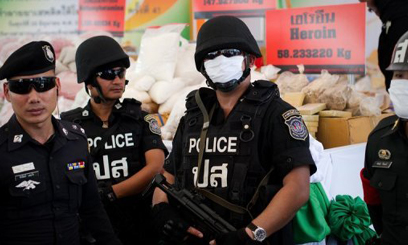
World Trade Center bomber Ramzi Yousef appears again on this list, this time in Thailand. After fleeing the United States, Yousef traveled throughout Southeast Asia, linking up with networks of Islamic militants in the region. While in Thailand, Yousef met with Abdullah Salih, a young student who was involved with local extremist groups. Known for his charm and celebrity status in militant circles, Yousef quickly attracted several followers. The cell decided to target the Israeli embassy in Bangkok.
Yousef again had the opportunity to ply his trade as a master bomb-maker, constructing a one-ton device. The cell rented a delivery truck and murdered the driver, concealing his body in the cargo area next to the bomb. Yousef had already fled the country to Pakistan on March 11, 1994, when a member of the cell began navigating the explosive-laden vehicle toward the embassy. Fortunately for the hundreds of people the bomb likely would have killed or injured, Yousef had recruited a terrible driver. The truck carrying the bomb smashed into a motorcycle just a few hundred meters from the embassy. The would-be suicide bomber first attempted to pay off the motorist he injured, but when that failed he fled on foot, escaping before the police could arrive. The truck was towed to an impound lot where the bomb and body of the murdered driver were not discovered for several more days. Most members of the cell were arrested, but Yousef managed to evade capture in the tribal areas of Pakistan.
1Operation Bojinka
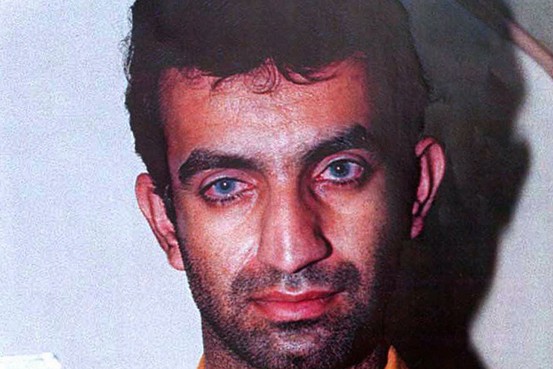
What did Ramzi Yousef do next? He strung together one of the most grandiose terrorist plots ever conceived, one that came dangerously close to completion. Fleeing Thailand after the failed attack on the Israeli embassy, Yousef eventually made his way to the Philippines. Upon arriving, Yousef began plotting an attack that would be remembered for decades—he would simultaneously blow up 11 US-bound airplanes over the Pacific Ocean.
Yousef had meticulously worked out every detail of the plot. His weapon of choice would be small, powerful bombs detonated near the planes’ central fuel tanks. Yousef and the members of the cell he recruited would overcome airport security by smuggling the detonators and nitroglycerin for the bombs in the soles of their shoes. Once aboard the plane, the bombs would be assembled in the lavatory, with a wristwatch serving as a timer, and the devices placed in the life cushion under the terrorists’ seats. None of the terrorists recruited for the plot required a US visa because each targeted flight had two legs, with the first leg terminating in various Asian cities. The bombs would be placed during the first leg, the terrorists would disembark, and the flights would detonate over the ocean during the second leg. Officials estimated that 4,000 people would have died had Yousef succeeded.
In late 1994, the plot was in its final stages. Yousef successfully tested his first bomb in a Manila movie theater, injuring dozens. The next trial run occurred on December 11, when Yousef boarded Philippine Airlines Flight 434 and hid one of the bombs under his seat. Yousef disembarked and the bomb detonated during the second leg of the flight, killing one passenger and wounding 10 others. The plane nearly crashed due to the bomb severing the steering controls, but the plane’s skilled pilots managed to accomplish an emergency landing.
The 11 targeted flights had already been chosen when, on January 6, 1995, a fire broke out in Yousef’s apartment while he was preparing explosives for the attack. Unable to extinguish the flames, Yousef fled on foot and caught a flight to Pakistan. The police uncovered the details of the plot when they responded to the fire and seized Yousef’s laptop, later learning even more from the confessions of Yousef’s captured accomplices. Yousef would remain a free man for two more months until he was captured at a guesthouse in Islamabad, Pakistan. Upon his return to the United States, Yousef was tried for his crimes and sentenced to life in prison. He currently serves his time at the supermax prison in Florence, Colorado.
Anthony is a full-time attorney and part-time comedy writer. He resides in the vast urban sprawl outside of Las Vegas, Nevada.

